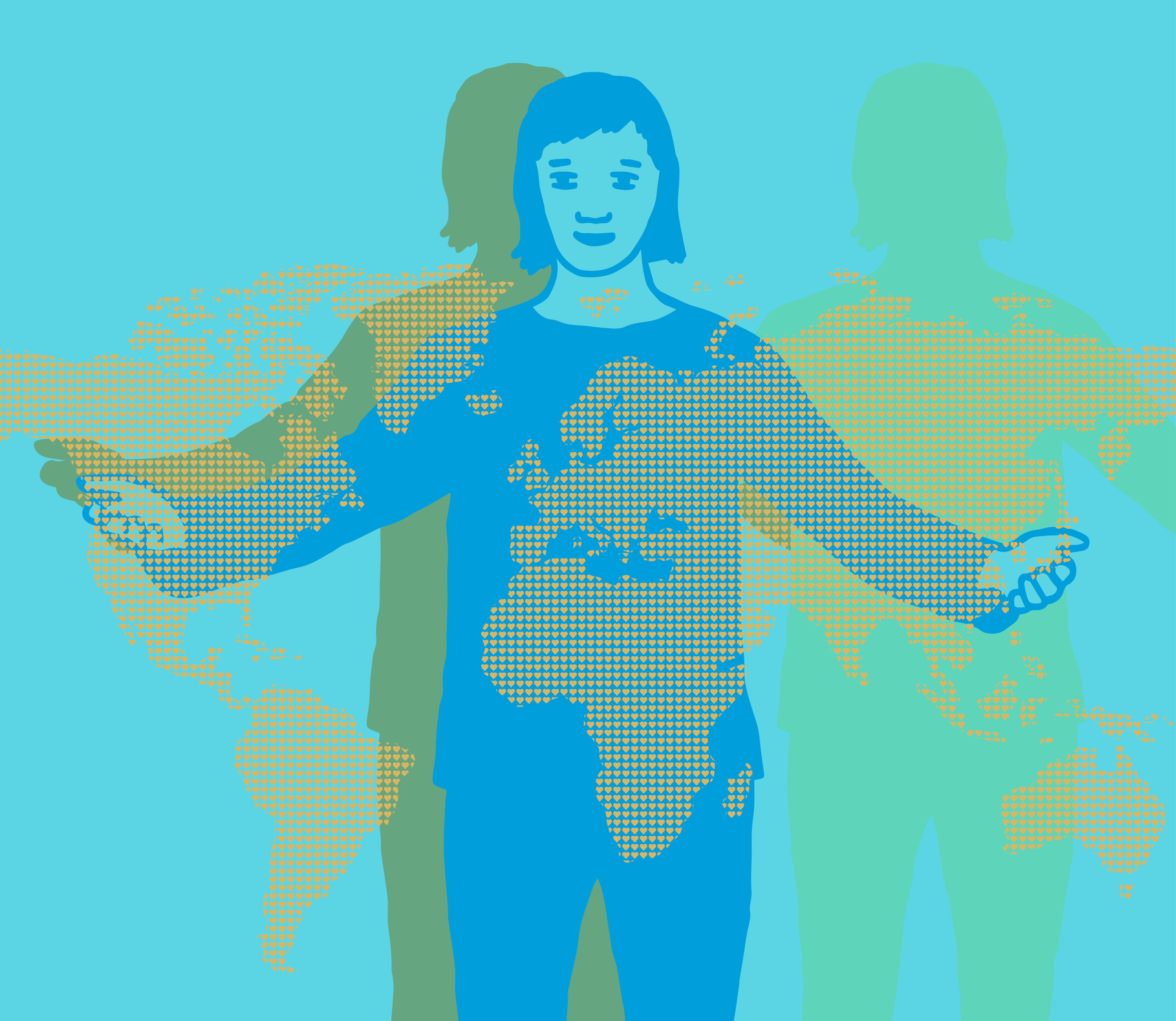Inclusion builds peace

|

|

|

|

|

|

|

|

Peacebuilding aims to create positive peace in a sustainable way through structures and policies that foster equality, justice and wellbeing, and thus address and prevent the “root causes” of violent conflict and elicit indigenous capacities for peaceful management and resolution of conflict.
Peace studies scholar Katarzyna Przybyla talks in her video “How to deal with conflicts” about conflicts as opportunities for communication. She discusses how conflict about who’s washing dishes, for example, is usually a chance to talk about more than just dishes. It is an opportunity to discuss our boundaries, our feelings and our needs and an opportunity to make new agreements.
We build peace in interaction. In creating change, the number one most effective thing every person can affect is oneself – me. In the previous chapter (Me) we built capacity through strengthening resilience and wellbeing from within. In this chapter we turn outwards: how can I show up safely and constructively when I work with others? What kind of values and beliefs do I bring, consciously or unconsciously, with me when I interact? What tools do I have for creating safer spaces, and how do I use them? This chapter, Me & You, is all about the makings of safer interaction and structures that build justice, equality and wellbeing in youth work.
Inclusion is a general principle about organising and designing work and environments so that everyone has as equal opportunities as possible to actively participate, learn, and genuinely be a member of the community. This principle includes many aspects from structures to activities, methods and pedagogies used so that all can participate in activities they wish to in a way that is most beneficial and fluent for each individual.
The first element of inclusion is working towards creating a positive, welcoming atmosphere. In an inclusive youth setting, young people are able to feel a sense of belonging; they know that they matter for who they are, they feel accepted and they can expect that youth workers do not discriminate against them. In addition, if peers discriminate against them, they can expect that any youth worker who is present at the time will tackle the case and start working to restore a safer environment.
The first step towards this is to meet each individual in a respectful and supportive way, acknowledging that all young people have diverse needs. When young people know and see that youth workers are willing to strengthen inclusiveness, it can feel safer to take part in youth activities.
Inclusion builds trust, which encourages active participation and enhances willingness and capabilities to solve everyday life’s conflicts in a nonviolent manner. When young people experience that they are a part of the group, they are more likely to be capable of seeing others through positive lenses and can be more motivated to build peace together. Youth work can set positive examples and support peacebuilding by taking inclusion seriously in every step of the work.
Inclusive youth work responds proactively to the specific needs of young people from minority and marginalised identities. This requires recognising, understanding and acknowledging structural and systemic inequalities. In practice, active involvement of people from minorities and marginalised identities should be seen across the organisation – including staff and management.
We must understand that inclusiveness does not happen by simply putting people into the same physical space. Of course, we need shared spaces too, but sometimes inclusive youth work involves working with, or creating spaces for, single identity groups, often requested by the young people from minority groups themselves. Sometimes the circumstances demand a very active and determined approach to tackling discrimination and working towards safer spaces. It takes courage to notice discrimination or racism such as micro-aggressions or hate speech, and to address them. This might not always be easy, but hopefully you will get some practical tools from this course on how to tackle injustices you encounter.
Planning for and implementation of inclusion is the adults’ responsibility. We should not let young people be in charge of inclusion by themselves: This requires resources, and we hope that with this course you are able to notice the particular needs your settings have, and maybe be better equipped to verbalise them and build towards creating safety in a sustainable way, which might include some changes in the organisation as well. In this chapter (Me & You), you will learn practical tools to transform organisations in an even more inclusive direction. Inclusive practice requires a culture of inclusive leadership, where leaders promote an environment in which people feel comfortable to contribute. This involves building trust, respect, and a feeling of safety within an organisation.